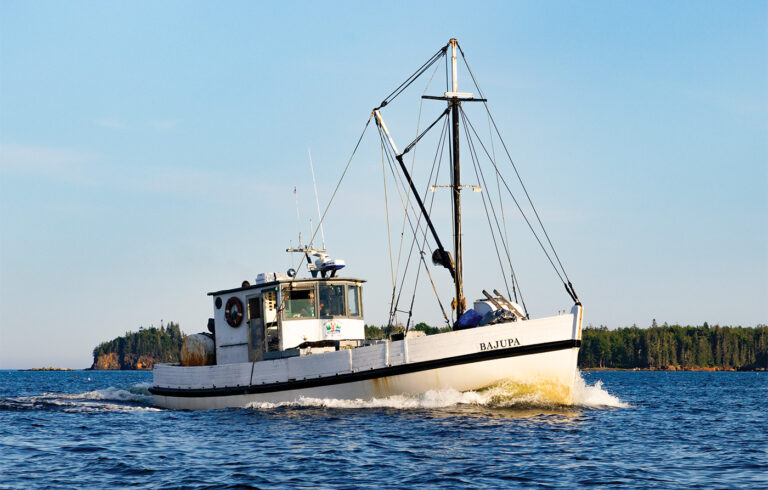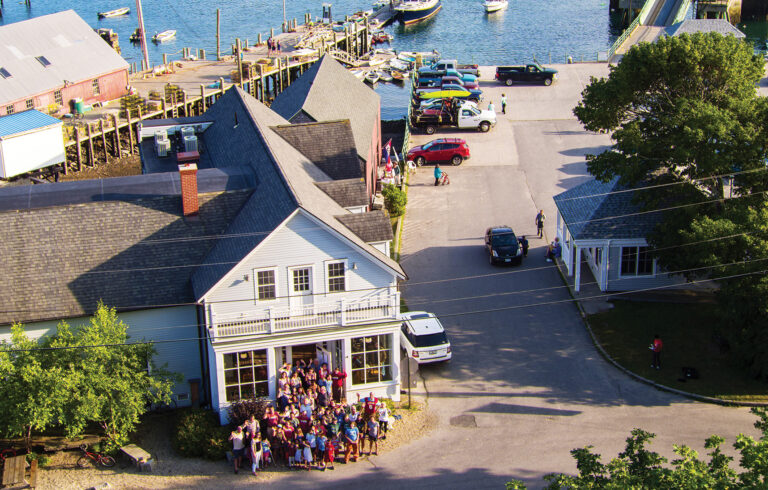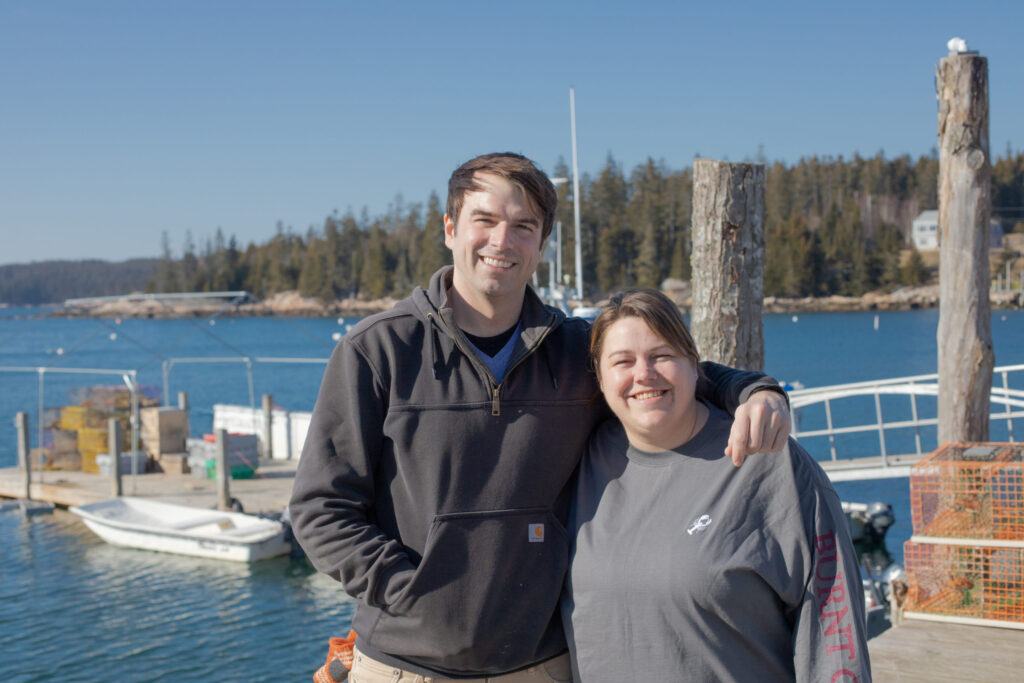
In the early 2000s, Travis Fifield left his hometown of Stonington for college and then a lucrative career with General Electric’s power plant construction division in Windsor, Conn. Funny thing: He chose to live and work within a day’s driving distance of Stonington because a little voice in his head told him he would want to wend his way back home one day.
What he didn’t know is that he would end up taking over his family’s multi-generation wholesale lobster business, Fifield Lobster Co., and recruiting his sister Christina Fifield to partner with him.
“When I was in college looking for a job in New England, I figured that, in the future, I’d probably want to work my way back home,” he says. “Southern New England was a good hopping point. It was like, ‘Dad, I’m moving home and I’m going to work in the business.’”
He laughs.
“A little while later it was, ‘Christina is, too.’”
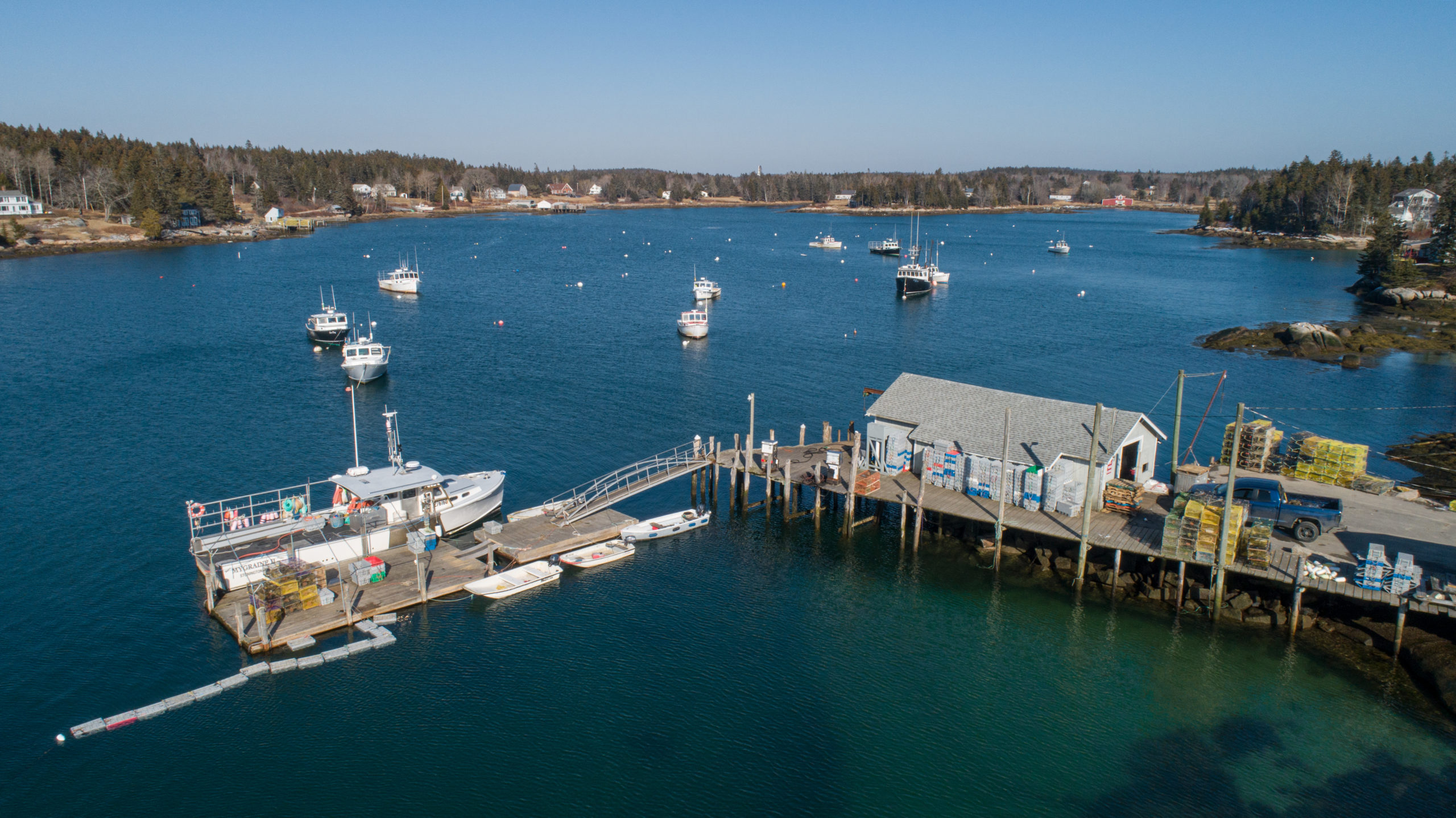
Finding Fifield Lobster is a bit of a trick, but a pleasant one. It involves winding through the narrow streets of this tiny island community, in view of clam flats, small inns and eateries, wharfs stacked with lobster traps, and fishing boats.
A visitor might be tempted to look for a roadside business sign. No such luck.
Along Route 15, which traverses the downtown, the thing to do is to keep going and going, keeping the ocean within view, until a street sign for Fifield Point Road appears, leading to a small, double-pointed peninsula that resembles a lobster claw.
Seconds later, stacks of traps, a couple of wharfs, and a bait shed signal destination reached. Still no company shingle, but that might not be necessary in a community of 1,000 year-round residents, where everybody knows each other.
More importantly, from the business standpoint, the fishermen know the Fifield family.
“The guys who sell here have been selling here for generations,” says Travis. “One of the families that sells to us, their grandfather sold to our grandfather, their father sold to our father, and now they’re selling to us.”
“Relationships and loyalty are big in this industry,” says Christina.
Their great-great-grandfather, Tilden, bought lobsters here through the 1940s and also built the wharf. Their grandfather Willie took over, followed by their father, Wallace, who goes by the name Wally.
Travis and Christina, now in their 30s, didn’t expect to carry on that tradition. In fact, they and their two other siblings didn’t really know what would happen to the company when their father stopped working. The kids grew up “business adjacent,” as Travis says.
“He worked very, very hard and was very, very good at what he did, so he tended to do everything,” he says. “We kicked around on the wharf but weren’t really involved.”
They remember the pleasures of growing up by the water, hopping into the skiff to noodle around the cove, setting traps on their student lobster licenses. Their mother Debbie, the bookkeeper until 2000, kept an eye on them from a shorefront shack that served as the business office.
Travis went to High Point University in High Point, North Carolina, to study international business and Spanish. While there, he worked for a freight forwarder that specialized in furniture imports, organizing transportation logistics for getting containers from factories to their destinations.
He was fascinated by the intricacies of international logistics. After graduation, he worked the next decade for G.E., handling components for its global natural gas business.
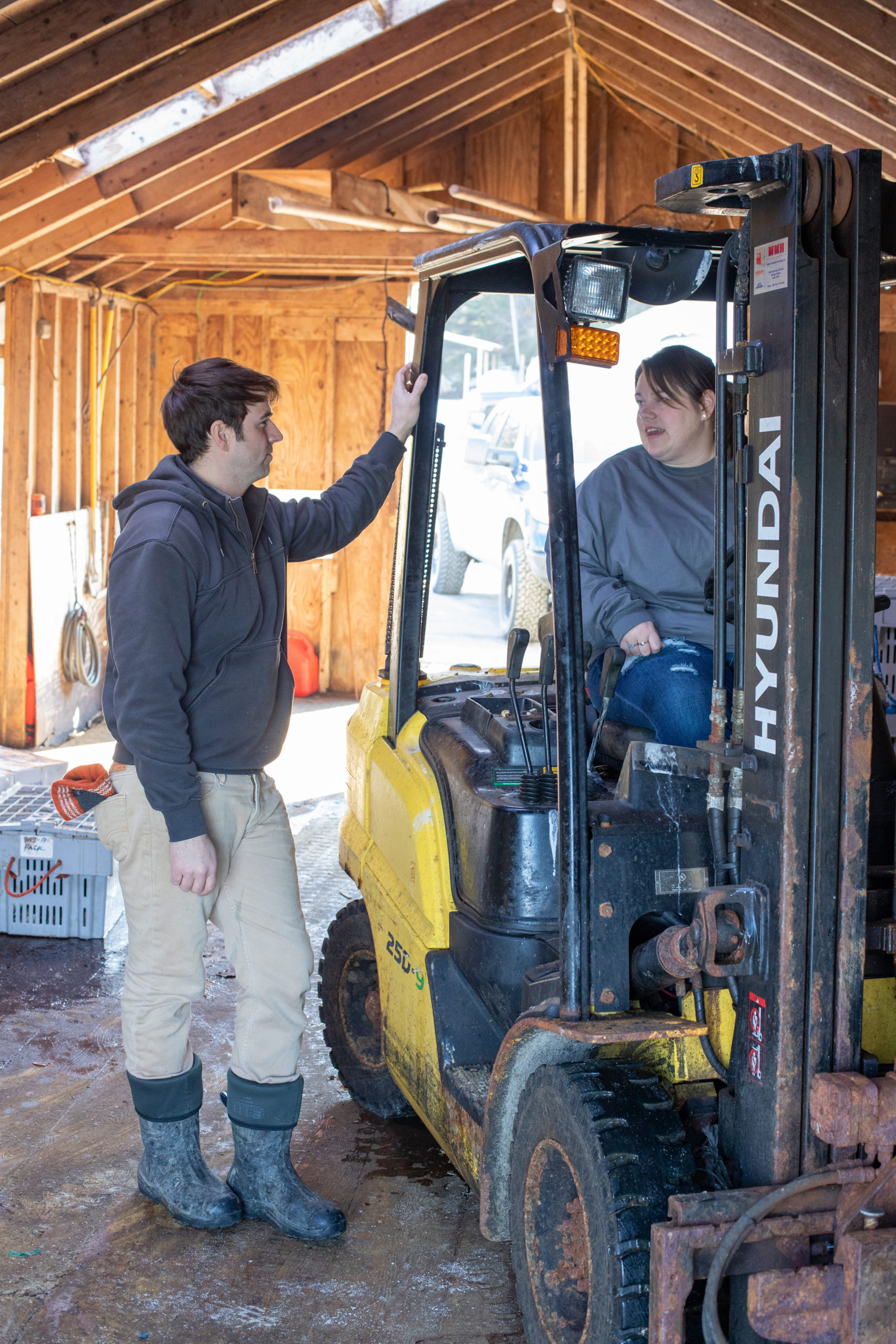
“I liked the planes, trains, and trucks part of it,” he says. “My job was figuring out how to get large, heavy stuff from point A to point B.”
For example, G.E. manufactures gas turbines.
“We’d figure out how to get them from the factory floor, coordinate the cranes, barges, and ships to bring them downriver to a break-bulk vessel, organize transit to whatever country they’re going to, organize and clear customs, then do it in reverse on the opposite side.”
Christina had also gone off, enrolling at Thomas College in Waterville for a degree in communications. She returned to Stonington to raise her daughter, now nine, got a couple of restaurant jobs, then started working with the Maine Center for Coastal Fisheries to help the Stonington nonprofit coordinate its Eastern Maine Skippers Program.
Wally kept up a nonstop pace. The siblings remember him spending countless hours working, even sleeping on the dock to sell bait and fuel to fishermen coming in before dawn. He’d shovel bait by pitchfork and haul fish totes up from the boats by block-and-tackle.
“We bought him a new bait shovel every Christmas,” says Christina.
“My grandparents used to tell him, ‘If you don’t slow down, you’re going to blow a tube,’” says Travis.
Back Home
Several years ago, two things happened. Reaching his 70s, Wally realized he couldn’t go on forever. And Travis got tired of the corporate culture.
“I was using all my vacations to come back here,” he says. “Every time I’d go back to Massachusetts, I’d think, ‘Oh, no.’”
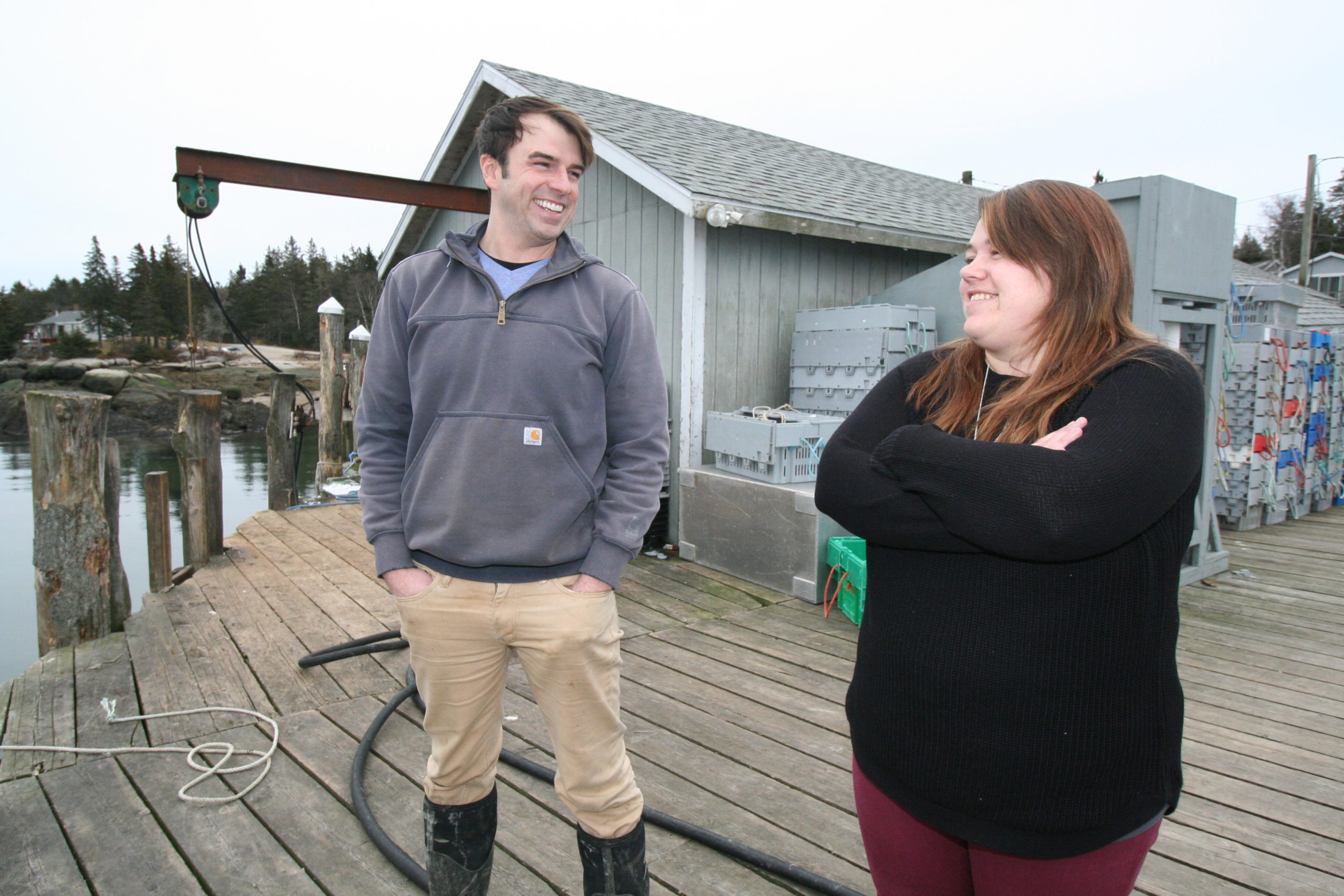 So he returned home, eventually recruited Christina, and the family devised a plan to transfer equity in the business. Although there was a huge learning curve, Travis’s training in logistics kicked in, plus his father, fishermen, and suppliers were glad to see the next generation stepping in and were eager to explain how things worked.
So he returned home, eventually recruited Christina, and the family devised a plan to transfer equity in the business. Although there was a huge learning curve, Travis’s training in logistics kicked in, plus his father, fishermen, and suppliers were glad to see the next generation stepping in and were eager to explain how things worked.
Wally remains involved in the business, but the siblings are modernizing. Travis is working on permit applications to expand one of the wharfs to accommodate more and larger boats. The plan includes hydraulic hoists—a boon over their father’s backbreaking tasks.
Rising sea levels also have prompted them to seek permits to raise the dock, which includes the bait shed, by at least a foot.
“Some of the high tides we’ve had, the water comes up over our parking lot and onto the floor of the bait shed,” said Christina. “We’re trying get ahead of that.”
In response to quota reductions in the herring fishery, they’ve diversified bait varieties to include pogies, rockfish, haddock, herring, tuna, pig hide, and more. The way bait comes in has changed, too.
“I remember boats coming in here pretty often to unload,” says Travis. “Or dump trucks would pull up and offload hand cuttings from the sardine factories.”
Now it comes in massive, 2,000-pound containers, much of it frozen and from overseas. A cooler below the office can hold the bait for a short time, but another goal is to build a freezer so they can stock up.
They’ve added seasonal workers and organized shift schedules to avoid the hundred-hour weeks of their father’s day.
“My husband’s a lobsterman, I work as a lobster dealer, I help out at a fisheries nonprofit. My entire life revolves around it.”
—Christina Fifield
That’s all the more necessary given the growing fishery. Years ago, the wharf served 10 to 15 fishermen. Today, 35 boats bring in over 1 million pounds of lobster.
Christina is building the marketing. For the first time, there’s a company logo and letterhead stationery.
“The bar was pretty low,” Travis says with a laugh.
Also new? Data tracking.
“We track crates in and out, where they go and how many,” says Christina. “We track bait and fuel. We’ve updated all of our technology. We became a corporation.”
In 2018, Travis became a selectman. Like much of coastal Maine, the town is grappling with affordable housing, as more homes are converted to lucrative seasonal and vacation rentals. The local schools are dealing with rising per-pupil costs and declining infrastructure. Then there’s the interdependence between the lobster fishery and the larger community. Stonington is Maine’s largest lobster port.
“I think there’s worry about long-term viability, as a smaller, more remote town,” says Travis. “Without the lobster fishery, I don’t know what a lot of people would do.”
“A lot of us rely on the ocean,” says Christina. “My husband’s a lobsterman, I work as a lobster dealer, I help out at a fisheries nonprofit. My entire life revolves around it. When the industry ebbs and flows, it hits everybody.”
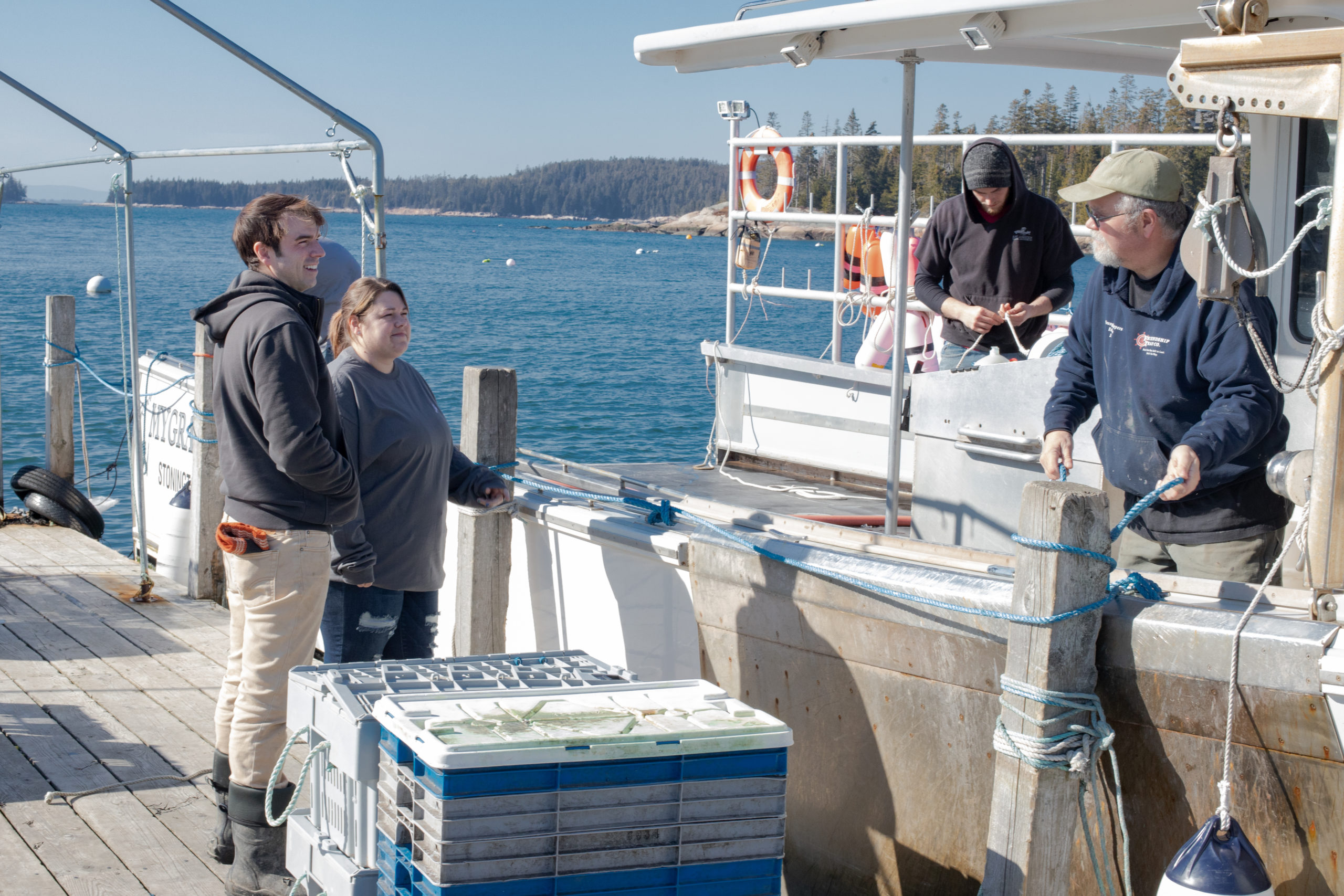
Yet, having been out in the bigger world, that small, remote town is just right. Christina and her family live in neighboring Little Deer Isle. Travis and his partner, Jake, live in the house he and his siblings grew up in, across the street from the business.
“We both want things to go well,” says Christina. “We want Dad to be proud. We want the fishermen to notice that we’re taking over but so it’s seamless, so we’re not changing too much but making lives easier.”
And the community’s fate also is important.
“I think there’s a push from people who move here to want to make this place similar to the place they’ve come from,” Travis says. “I really want to keep this place the way it is.”

